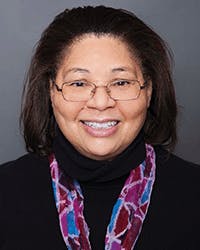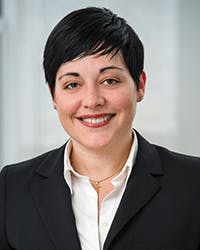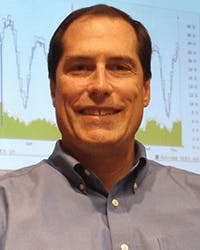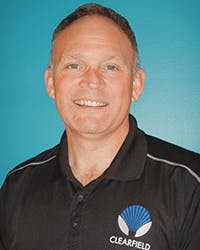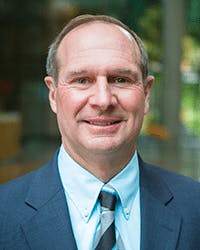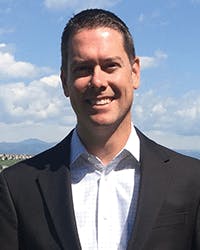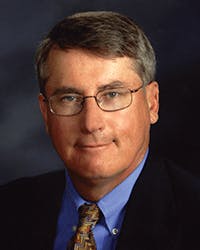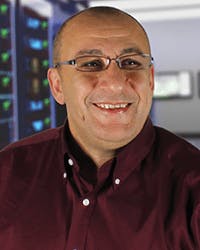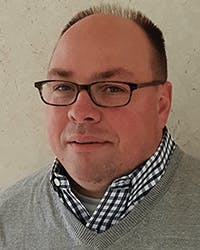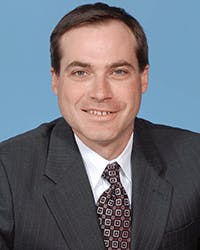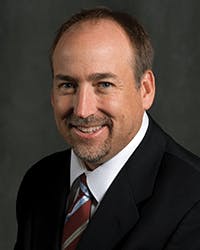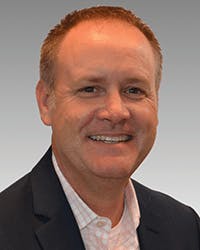Latest from C&E/NetDev Ops/GIS/Open-Source Networks
Learn what our Influencers have to say about Cloud latency, extreme streaming, U.S. smart cities, and reorgs. We asked our ICT Influencers to consider these questions, and to answer 3 of them. Read the insights of these forward-thinking professionals in this second in a 3-part series.
EXTREME STREAMING
Subscription video on demand (SVOD) services have exploded as broadband networks have grown more robust. As a result, streaming is now eating up the lion’s share of bandwidth.
Sandvine has compiled some new global statistics showing that streaming of real-time entertainment now accounts for more than 70% of U.S. downstream traffic. Incredibly, that figure was less than 35% just 5 years ago. In addition, a recent Cisco study reports that by 2020, 75% of mobile traffic will be video. (Sources: www.sandvine.com and www.cisco.com)
How should providers use video in their fight for ARPU against OTT operators? Do incumbent carriers have advantages over OTT operators in terms of this video trend? Why or why not?
CLOUD LATENCY
When different users and enterprises are accessing the same Cloud they’re actually fighting for bandwidth. That, of course, can cause something of a traffic jam in terms of extra latency and packet loss. The ideal would be to reduce this latency in cloud networks to keep it as low as possible, especially in terms of video and other highly interactive user experiences.
What are some operational and maintenance solutions that can help providers gain better visibility into faults on the network to improve latency in the Cloud?
U.S. SMART CITIES
Smart city initiatives are emerging across the U.S. A key player behind these projects, US Ignite, is a joint venture of the National Science Foundation and the White House Office of Science and Technology Policy.
Application development is focused on 6 areas deemed national priorities: 1.) education and workforce; 2.) energy; 3.) health; 4.) public safety; 5.) transportation; and 6.) advanced manufacturing. During the next 5 years, the US Ignite partner ecosystem is expected to deliver dozens of applications across some 200 community test beds.
As with other smart city efforts, US Ignite developers are leveraging high-speed, low-latency networks (key to handling multiple bi-directional streams of uncompressed video), as well as SDN and OpenFlow. SDN will improve control over network routing and optimization, enable the use of virtual network "slices" matched to application requirements, and support distributed programmable resources throughout the network.
What role should municipalities play in the infrastructure development needed for these initiatives? How do these types of smart city initiatives challenge the network but also provide a rich proving ground for the IoT?
REORGANIZATIONS
Talk about whether it’s important for ICT providers to consolidate their engineering and construction organizations with their IT organizations. Will that help break down functional silos? And how will that change impact network professionals today and in the future?
CONNECTED WEARABLES
Corporate wellness programs are increasingly providing fitness trackers as a way to motivate workers to become more physically active. By 2018, 2 million employees will be required to wear health and fitness tracking devices as a condition of employment. Startups such as Limeade and Jiff, enable fitness trackers to be an integral part of work-related goal setting and incentives.
What does that mean for service providers today in terms of network impact and employee impact?
HIGH PERFORMERS
High performers are as good at correcting mistakes as they are at avoiding them.
As you work to inspire your team members, what does this mean for you as a leader? Talk about what is most important for you to teach your team members during such a time of change in the ICT industry.
Mike Grice CTO All Systems Broadband [email protected] www.allsystemsbroadband.com
Extreme Streaming
Streaming video is a major use of the network now and going forward, with content flowing not only from network providers but Over-The-Top players as well. The network provider gains advantage when it has a compelling eco-system that provides the multiplicity of outlets and capabilities demanded by end users. When providing a robust, reliable, and fast broadband connection, coupled with a broad array of services, the network provider has a valued relationship that encourages a larger wallet share from the customer.
By building enhanced data centers, moving to a more open and flexible software-defined network, and having the ability to offer availability across platforms, the network providers have several levers to pull to capture additional business. Recent examples in the news show how partnerships across platforms can lead to content access even across an OTT provider’s device.
Reorganizations
The shift from traditional proprietary equipment-driven networks to more open flexible networks will have a major impact on how ICT providers prepare for the future. At the Open Summit this year leaders from AT&T pointed out the critical need for reorganizing and retraining the networks. The focus is to shift speed from telephony providers of old to the new more nimble software driven businesses of the future.
More specifically, it will be important to have a clear path of how to leverage and engineer networks with a model that shifts total reliability from sensitive critical uptime of key equipment to banks of simpler equipment with redundant capability that can tolerate a percentage of failures without impacting the network as a whole. One ICT professional said, "We used to treat our equipment like pets, but we want to treat it more like cattle."
High Performers
The topic of high performers reminded me of a Harvard Business Review article by Roger Bohn, "Stop Fighting Fires". The critical message is that our high performers should be best at avoiding fires, and good at putting out big fires. As a leader, I focus on the message that we want to avoid fires, and, if we see one starting, we want to address it quickly so that it does not grow into a big problem to solve. In this time of change it is critical that change not be haphazardly introduced, but be part of a larger, well-planned strategy.
[toggle title=”Biography & Company Profile” load=”hide”]Mike Grice is Chief Technical Officer (CTO) at All Systems Broadband (ASB), responsible for setting ASB’s technology vision. His organization is responsible for product innovation along with technology and product roadmaps, product management, and business development. Mike has over 28 years of telecommunication experience with an outside plant focus. The first 20 years of experience began at Raychem. Previous roles include product development, product management, and sales. LinkedIn Profile: /michaelgrice
All Systems Broadband (ASB) enjoys solving problems. We do this through detailed collaboration with service providers, resulting in innovative products that minimize costs, maximize network assets, and delight end-user customers. We are a TL 9000 certified provider of custom-engineered fiber-based solutions, and an independent manufacturer of connectivity products for the evolving voice, video, and data industries. From its US and overseas factories, ASB manufactures a complete line of fiber and copper connectivity products including: the industry-leading HiDT and HiD4 CWDM modules, fiber demarcation boxes, fiber splice shelves and trays, HDMI® cables, splitters, optical attenuators, transceivers, and more. www.allsystemsbroadband.com[/toggle]
Sabrena Lampley-Talbert Director Construction & Engineering AT&T www.att.com
U.S. Smart Cities
Municipalities must provide collaboration, partnership, open dialogue and insights into the specific needs of their communities. For example, one way to support the build of a fiber network is by implementing best practices with permit processing, allowing a fluid movement through each department that needs to review the request.
AT&T is a fully integrated solution provider with more than 140 years of experience and more than 12,000 patents worldwide. We are using our IoT technology to create our smart city framework — connecting people with the world around them. We are transforming businesses, communities, and individual lives by improving safety, healthcare, efficiency, increasing savings and environmental sustainability, all through connectivity. We are connecting homes, cars, water meters, parking meters, and more. We have demonstrated our commitment to a robust and highly secure network by making significant and consistent capital investments in the network. The AT&T Foundry locations, along with AT&T Labs innovation and strategic partnerships, have accelerated technological advances in the Smart Cities space at an amazing velocity.
Reorganizations
Collaboration and cross training are more important than consolidation. Using a geometry example: consolidation without specialization can cause a skill and knowledge effect of a two-dimensional plane. It is flat with no depth, but it can have an infinite reach in length and width. In other words: being a Jack of all trades, master of none. With STEM skill sets, you need people who specialize in one area to add the third dimension of depth. The goal is to ensure there is enough cross training so that each individual can speak the language of the other and, in turn, build collaboration.
Connected Wearables
Technology is evolving and transforming our lives. As more data is tracked and analyzed, it is increasingly important that the network that carries and stores this data is highly secure, robust, and intelligent. Our AT&T Labs are the forefront of technologies in Data Analytics, Cloud Services, Intelligent Systems, and more. At AT&T, finding ways to help employees improve their health and welfare is essential. In my own experience, using a wearable device not only showed how much inactivity is in our daily lives, but also inspired me to challenge myself to be more active. Wearables are having a similar impact on people around the world.
[toggle title=”Biography & Company Profile” load=”hide”]Sabrena Lampley-Talbert is the Director of Midwest Planning, Construction and Engineering for AT&T. Sabrena is responsible for loop technology deployment, capacity planning, fiber plans and administration of Outside Plant Feeder facilities for 5 Midwest States. She has more than 15 years of telecommunications experience with AT&T and holds a bachelor’s degree in Business Administration and an MBA. She is passionate about mentoring and developing others and is an active participant in several mentoring programs.
Follow our news on Twitter at @ATT, on Facebook at http://www.facebook.com/att and YouTube at http://www.youtube.com/att. www.about.att.com[/toggle]
Patti Paulo VP of Business Operations Axiom Fiber Networks [email protected] www.axiomfiber.com
Extreme Streaming
Video streaming accounts for the majority of data traffic in the US, and those numbers are only likely to increase as people transition from the traditional cable TV models and adhere to that offered by OTT Operators. While OTT operators might say content is king, telecom providers must highlight the importance of seamless connectivity for optimal end-user experience.
Adapting to consumer trends is fundamental, and engaging in partnerships with other telecom providers and equipment vendors, while expanding network reach to the "edge", will allow carriers to sustain control and gain flexibility over their networks. OTT operators will always require transport; the real fight will be with the growing fiber-like expertise brought forth by the Wireless Providers.
U.S. Smart Cities
Data is a commodity for the end-user community, and building out scalable networks is crucial for sustaining high demands for traffic. We, as consumers, want to be able to have all the information at our fingertips, a smart city allows smart devices such as smartphones, water meters, etc. to connect to the "smart infrastructure" and improve quality of life and productivity in cities.
A smart network is the catalyst for smart cities. At Axiom Fiber, we’re proud to provide the physical infrastructure that Manhattan requires to improve, build upon, and grow the network. Our fiber is the start of the equation; by entering in strategic partnerships, Axiom is able to expand its capabilities beyond Layer 1, thereby maximizing and optimizing smart city potential.
High Performers
The ability to predict potential challenges, to adapt to new strategies or initiatives, and to learn from other thought leaders, are essential components for success. Building and sustaining the infrastructure behind the Internet during the height of the Internet age is humbling, and requires all different kinds of skill sets and levels of expertise. Axiom Fiber Networks is a nimble company that thrives in this fast-paced environment.
I believe a successful team is one that can be self-sufficient, quick on their feet, passionate and confident, and always providing the utmost in customer service. These traits allow the teams to be the best at what they do and equate to delivering service per Axiom Fiber’s motto: with Speed, Simplicity and Confidence.
[toggle title=”Biography & Company Profile” load=”hide”]Patti Paulo joined Axiom Fiber Networks with over 15 years of Telecom Operational experience, having held various senior level roles at XO Communications, RCN Metro, and Glowpoint Inc. Her responsibilities involve driving the traditional Telecom Operational functions, which include providing long-term technology vision that supports and aligns with the company’s goals and strategies, business plans, operating requirements, and overall efficiencies by focusing on innovation and client adaptive measures.
Cloud Latency
As service providers deploy their applications in the Cloud, consistent service quality requires monitoring systems with the ability to relate the network performance to the customer experience.
To improve visibility into network issues, Cloud engineers should leverage the Y.1563 Service Availability standard.1 This ITU-T standard goes beyond the up/down status provided by traditional network availability metrics, and instead relates granular network performance measures to the quality achievable by customer applications. The service availability metric relies upon monitoring of parameters such as packet loss and latency, with configurable thresholds chosen based on the sensitivity of the application to network impairments. This service availability measure promises to tie the quality of the underlying network to application performance more effectively to drive increased satisfaction. (Source 1: https://www.itu.int/rec/T-REC-Y.1563-200901-I)
U.S. Smart Cities
These initiatives represent the beginning of a long-term, significant ecosystem change. Municipalities can expedite their urban and economic development benefits by embracing these initiatives and providing administrative, budgetary, and regulatory leadership. Partnerships with service providers to develop adaptable, future-proof network and service investments should be a municipality priority to assure success. CenturyLink is uniquely positioned to serve the IoT world in general, and municipalities striving to develop Smart Cities in particular, because it has end to end coverage. CenturyLink can install the devices and connect them to the networks, secure the connections, bring the data to the cloud, ingest, structure, store, and analyze the data, and extract the insights needed to help municipalities improve the lives of their citizens and the competitiveness of their cities.
High Performers
High performers are the backbone of any organization, but in this time of rapid change their contributions must expand beyond improving existing processes, designs, and technologies, to inventing completely new areas. Technologies from different protocol layers combining with each other, network functions repartitioning through NFV, and information and functional resources unifying in the Cloud, all drive fundamental changes to the ICT business. It is critical in this environment to teach younger high performers that they may have to build new ways of doing things from scratch. And it is just as essential to teach more-seasoned high performers not to remain attached exclusively to the areas where they have built up expertise over the years, but to help forge a way to success using new building blocks.
[toggle title=”Biography & Company Profile” load=”hide”]Tim Doolittle is an industry veteran with background in all aspects of data network operations and network design. As Director of the IP Backbone Network Reliability Center, Tim is responsible for the reliability and stability of CenturyLink’s IP infrastructure. This network consists of over 200 POPs across the globe supporting over 6M consumers, 200K business customer circuits, and 55 Data Centers. Tim also has experience in hardware, software, and system design of network communication equipment.
Extreme Streaming
"They will never use all that bandwidth." How many times have we all heard this statement? Another goodie is "I don’t want 105 channels! I only need 5." OTT operators have keyed in on this, and are offering packages that allow people to watch what they want, when they want. Providers will always have a hard time getting their hands on the content that will compete with the OTT folks. Realistically, future revenue for providers is about how much bandwidth they can deliver. In turn, network speed and reliability are more important than any content they can provide. As the demands for more speed and bandwidth increase, provider’s networks need the ability to scale from today’s needs to what tomorrow will bring — without breaking the bank.
Reorganizations
Today’s FTTx networks are just a large version of a LAN or WAN so, it makes sense to merge the IT and engineering organizations together. However, the biggest single fear that most people have is change.
Each organization feels they have the best methods for designing and constructing a network, which can lead
to turf wars. Keeping an open mind and drawing upon the strengths of each team’s background are the most important factors to building a successful organization. Another key element is finding the right manufacturer that will listen and work with both teams collaboratively on new and innovative products that meet their needs. Tomorrow’s professionals need to be a flexible hybrid that embraces change and isn’t afraid to meet it head on.
High Performers
Clearfield has allowed me to assemble what I think is the greatest team of application engineers in the industry. We all have a variety of backgrounds that each of us learn from. Making mistakes is the biggest part of the learning process. It’s how one recovers and learning from those mistakes that’s important. The most important trait that I strive to cultivate in my team is continuous innovation. That one idea may be the next big thing in the industry so don’t be afraid to step forward and take the leap.
[toggle title=”Biography & Company Profile” load=”hide”]With more than 22 years of telecommunications industry experience, Brian Schrand is a technical expert, responsible for working with Clearfield customers — helping them achieve the most cost effective deployments of FTTp networks. Previously, Schrand was Senior Specialist for Network Engineering, Construction and Operations at Cincinnati Bell Telephone (CBT). While at CBT, Schrand held various management positions including OSP Construction, Installation, Information Technology (IT), and OSP Staff. Prior to CBT, he assisted in engineering and constructing the City of Cincinnati’s first fiber network.
Plug-and-play solutions are being called upon to reduce labor at the time of installation. But traditional plug-and-play solutions put an added burden on network design, requiring extensive site engineering to ensure proper lengths are called out. The new frontier in plug-and-play is Clearfield’s labor-lite technologies that are more forgiving in the required pre-engineering. Labor-lite products take the reduced need for labor and skill level needed all the way back to the pre-engineering stage.
Laying out the backbone of the network with Clearfield’s FieldShield Pushable Fiber, FieldShield StrongFiber (the industry’s first 900um OSP drop cable) and with pre-terminated, field-assembled (not spliced) connectors, simplifies and speeds up fiber installations and maintenance and reduces the need for slack storage, the nemesis of traditional plug-and-play technology. www.SeeClearfield.com[/toggle]
U.S. Smart Cities
Smart cities have the desire and means to drive the development of IoT. They exist to serve their constituents/citizens and can access two of the essential building blocks for IoT development: funding and data. Through public-private partnerships, they can tap resources for project funding. San Jose is partnering with a Wi-Fi device manufacturer to deploy nodes that will collect data on vehicle and pedestrian traffic to activate streetlights or detect gunshots. These devices and others will improve safety while reducing costs. Other cities like Los Angeles provide public access to their rich troves of data with the recently launched GeoHub site that serves up over 500 types of geodata. Smart cities will serve as the proving ground for many of these fledgling technologies while better serving their citizens.
Reorganizations
Reorganization is too often a favorite management tool to solve business problems, but in most instances, structure plays only a minor role. The strength of a high-tech organization is functional expertise. I worked at a company that was struggling to accelerate the installation of special circuit services. The problem was that there were about two dozen steps assigned to separate work groups in the order-to-bill process. One might assume that the solution would be to put all work groups under one manager. Some processes required only a few minutes to complete, but the system was based on sequential completion dates. The solution was to not reorganize but rather use a system that managed processes based on time increments that were smaller than full days.
High Performers
Organizations that bestow the label "high performer" on individuals who seldom make mistakes are doomed. Test pilots use the term pushing the envelope — going beyond commonly accepted boundaries and extending an aircraft’s flight to understand its limits of performance. If your team always plays it safe, its members will never explore their limits, and underperformance becomes a cultural norm. Discovering what’s possible sometimes requires reaching beyond the limit and failing. It sounds counterintuitive, but imagine the experience your team members gain as they quickly develop and execute a recovery plan. Teams need to stretch without the fear of reprisals for occasional failures. You don’t want failure to become a habit. However, exceeding limits, failing, and recovery, are critical components of developing high performers.
[toggle title=”Biography & Company Profile” load=”hide”]Randy Frantz is the Director of Telecom Solutions at Esri. He has more than 33 years of experience in telecommunications engineering and operations, including: senior vice president of product marketing for Axient Communications, vice president for Cox Communications™ new product operations in the Arizona market, where he launched its telephone, digital television and DOCSIS cable modem services, and director of network design for Bell Atlantic International, where he was responsible for business development in central Asia, Europe, and Russia.
U.S. Smart Cities
First and foremost, communities throughout the US, and even the world, must continue to embrace the changes that the IoT is driving throughout our culture. Our local communities, and the municipalities that serve them, are critical to the continued innovation of the IoT. Municipalities must encourage, and, in some cases, even stimulate the development of advanced telecommunications networks within their cities and towns.
By allowing competition and infrastructure development within their markets, municipalities put themselves at the forefront for attracting new businesses that will create both employment and population growth. Municipalities should leverage the opportunity US Ignite is creating to invest in their own IoT infrastructure and systems to improve their efficiencies as well as provide their citizens with the experiences they demand.
Reorganizations
The scope and scale at which many ICT providers operate typically will not allow for direct organization
of their engineering, construction, and IT teams, under a single umbrella. However, no matter the size of a company, there is one consistent solution to reduce the impact of work silos: alignment.
It is imperative that all organizations within the company are working toward common goals. A primary function of the leadership role is to define the long-term vision and short-term objectives for the organization, and to ensure clear alignment across all partner organizations in relation to our overall corporate goals. Our leadership here at Level 3 is consistently reviewing our objectives across organizations to ensure that we maintain alignment. For Level 3 to be successful, as with all ICT providers, it is critical to work across all functional silos in harmony to achieve our corporate objectives.
High Performers
The most impactful change does not happen in the boardroom; it happens with the personnel who execute on a daily basis. As leaders, we must continue to provide our employees with the stable foundation for change across our industry.
Our employees need the support and reassurance that missteps are a necessary part of the pursuit for consistent improvement. We must challenge how we do business and course-correct for our mistakes as necessary. Within this framework, employees will continue to identify opportunities to innovate the business. Additionally, you will provide the appropriate environment for your high performers to excel, while encouraging more employees to strive to become high performers.
[toggle title=”Biography & Company Profile” load=”hide”]Jeff Polachek is Vice President, Operations at Level 3 Communications. In this role, Jeff has ownership of OSP deployment and maintenance, network implementation, and infrastructure management. Over the course of his career, Jeff has been a proven leader in driving key corporate initiatives to streamline business processes and provide an improved customer experience. Jeff has had multiple leadership roles within engineering, planning, and operations throughout the course of his career and is a graduate of the Pennsylvania State University College of Engineering.
Reorganizations
Many large telecom companies have Construction, Engineering, and Planning departments that do not interface or communicate with each other very well, and are far from being consolidated.
This goes with the attitude "This is my job and I do not need to understand the big picture." By keeping departments separate, it really impacts the productivity and cost-reduction potentials for these companies.
Now throw in the IT department as another standalone silo, which could add a lot of support, and help Planning, Engineering and Construction understand what their customers’ needs for IT are going forward. If done correctly, IT could have a very positive affect on the future needs (Planning), design (Engineering), and build (Construction) that will better serve their customers.
Connected Wearables
Corporate wellness programs can pay great dividends for any company, large or small. These programs can have a great impact on productivity for employees. Many of us sit at our desk all day and do not realize the little amount of time we actually are moving to keep our body fit, which will keep our minds fit and creativity flowing. Wearables help us realize our lack of fitness and help us set goals. Rewards and recognition need to be given out to employees for fitness and participation. With regard to network impact, a more creative and higher energy level team will lead to better focus and execution of company goals and strategies.
High Performers
No company or individual will ever be 100 % correct or without error.
It is extremely important to inspire your team to take risks to be on the leading edge of the changing ICT industry. When a stumble or problem occurs, a team should be taught to look forward and not back, and to tackle the problem or error head on to correct the mistake. Learn why we were not right, and develop a strategy to correct the mistake QUICKLY!
Explain to your customers what you are doing to make it right, and how it will lead to better solutions or services in the future.
The benefits of being on the leading edge of new developments can far outweigh the effects of a mistake, if handled properly and promptly.
[toggle title=”Biography & Company Profile” load=”hide”]Jerry Allen, PhD, has been in Outside Plant Construction Industry for 33 years. Dr. Allen has 15 patents on OSP Products and Systems. With his mechanical engineering degree from Trine University, Dr. Allen has developed products and systems that allow maximum use of conduit space, enabling more cables to be placed more effectively and to be installed at lower placing tensions. Dr. Allen was the recipient of the 2013 Harry J. Pfister Award for Excellence in the Telecommunications Industry, given by BICSI, for his innovative solutions for the Telecommunications Industry.
MaxSpace® is a new, patent-pending, No-Dig technology and construction method that safely removes existing innerduct from around active fiber optic cables with virtually no load on the cables and no interruption of service. As the innerducts are removed, cables migrate to the bottom of the outer conduit. Once all innerducts are removed, up to 90% conduit space is recovered allowing up to nine (9) more cables to be placed in the reclaimed space of a conduit that was once considered full. www.maxcell.us[/toggle]
Cloud Latency
There are several contributing components to latency levels in Cloud-computing applications. Poorly designed infrastructures with too many router hops, virtualized networks with internal packet delays, and big data centers using more bandwidth through distributed computing, are often culprits. In addition, providers may lack a good way to measure protocols like HTTP performance, and, of course, everything is dependent on the amount of Internet traffic at a specific point.
It is critical that organizations understand how to manage and reduce latency within their own internal networks as well as in the Cloud through dedicated network connections. There are many software applications available to help manage and optimize internal networks, but when it comes to migrating to the Cloud not all providers are equal. The best option is to connect to a public Cloud platform because their infrastructure and applications are designed to reduce latency and improve performance while boosting your ROI and improving customer satisfaction.
U.S. Smart Cities
The new Smart Cities Initiative targets federal resources to meet local needs and support community-led solutions through new technology collaborations. The goal of municipalities, businesses, industries, and universities is to develop a smart approach to analyze, monitor, and improve everything from public safety to transportation to environmental issues and emergency response and medical services. This will create an increased demand on the network for sharing and transferring data at the local and regional levels.
Fiber Internet connectivity will be a key player providing needed bandwidth and high-speed capabilities for even more interconnected IoT applications. Suttle products featuring the GigaLeapTM G.fast technology allow service providers to build and expand existing networks with reliable high-speed connections that support Smart Cities.
Reorganizations
Fiber has changed everything! Many networks have older system architectures bound by copper interconnect lengths and/or lower input/output densities, which causes data traffic jams that you simply cannot improve or control. Fiber has opened up the broadband highway to high-volume capacity.
However, networks and protocols with built-in bottlenecks continue to cause performance issues restricting the ever-increasing data demands of today and tomorrow. The time and costs to deploy fiber and upgrade networks contribute to the situation. More coordination between engineering, construction, and IT from the beginning is needed to design and build smarter networks with system architectures designed to maximize fiber technology.
[toggle title=”Biography & Company Profile” load=”hide”]George Wakileh, CSI Chief Technology Officer and Business Development, joined Suttle in 2009 to lead the company’s global technology and business development efforts. He implemented strategic product innovation and companywide restructuring to provide solutions for todays’ high-speed connectivity demands. Mr. Wakileh has 20+ years in the telecommunications industry, and has been recognized as an innovative leader, strategic thinker, and industry expert who has expanded Intellectual Property offering and Patent Portfolio. For more information, contact George at [email protected].
Suttle’s newest brands are GigaLeap™, FutureLink™ and MediaMAX™. GigaLeap™ offers above- and below-ground distribution systems, pre-connectorized deployments, and pushable, pre-terminated fiber. FutureLink™ provides connectivity for high-speed OSP and premise applications as part of our FTTx solution. MediaMAX™ is designed for gigabit services. MediaMAX™ optimizes installation cost and practice while maximizing coverage and high-bandwidth.
Suttle’s vision to be the industry leader in innovative solutions is founded on connectivity reimagined — our drive to create the right solutions through an innovative development process to future-proof our customers’ network. Products are designed to comply with the most stringent industry standards; quality management systems are ISO 9001 and TL9000 certified. www.suttlesolutions.com[/toggle]
Connected Wearables
At TDS Telecom, employees are strongly encouraged to become more physically active. For extra motivation, we have several competitions each year. Employees are invited to form teams and then participate in some sort of challenge that involves tracking steps, exercise, eating habits, etc. Most of my team wears fitness trackers. We try to take it a step further. Last year, we participated in the Tough Mudder; this year we are doing a Spartan race. This helps our team become more physically fit. Plus, our team enjoys the camaraderie. They are completely voluntary, but we do have a great turnout.
U.S. Smart Cities
Building a fiber network is a two-way street. Let’s face it: the effort to deploy a large Fiber-to-the-Home project has a huge impact on municipalities, especially smaller ones. Often, they lack the bandwidth to respond to the onslaught of permit and locate requests as well as the flood of citizen inquiries. However, when we work together collaboratively and build trust, it’s a lot easier to create the timeline and identify/address potential challenges. To have trust, both sides have to deliver. From my perspective, this starts with municipalities recognizing the value of smart city initiatives and their positive impact on local businesses and residents — and the advantages they gain over near-by communities.
I have been fortunate to work with many communities where leadership understands the advantages of a fiber-based infrastructure. In these cases, when we work together, we each have success.
High Performers
I recently read a Don Rumsfeld interview that was recorded during the war in Iraq. He said, "A’s hire A’s and B’s hire C’s." He went on to explain that great leaders surround themselves with great people; otherwise, you spend a lot of time dealing with "C" or secondary issues. He was saying that, if you are fortunate enough to have talented people around you, you can focus your team’s direction on what matters most.
I feel fortunate to be in this situation, surrounded by very talented individuals. I’ve found the best way to deal with any issues our team encounters is head on, while keeping an eye on what’s coming. Having strong-minded, sharp individuals with different points of view can be a blessing; it can also be challenging at the same time. Identifying the right folks is important, but keeping them engaged may be even more important.
[toggle title=”Biography & Company Profile” load=”hide”]Kevin Maes is the Manager of OSP Engineering & Construction at TDS Telecom. He has more than 20 years of experience in engineering and construction. He spent time in the US Army and graduated from the University of Minnesota with a BS in Geography. Kevin joined TDS in 2000 after working in the field as a consultant. He is married with one child (son), and outside of work he is an avid fly fisherman. For more information, contact Kevin at [email protected] or visit www.tdstelecom.com.
TDS is headquartered in Madison, Wisconsin, and operates OneNeck IT Solutions LLC, TDS Baja Broadband LLC, and BendBroadband. Combined, the company employs more than 3,400 people. www.tdstelecom.com[/toggle]
High Performers
During times of tremendous change, high performers are essential to the success of any group, company, or industry. This type of team member can disassemble a business challenge and quickly identify the true sources of value to the company. As a result, quicker, more-targeted solutions are achieved that drive greater overall benefit to the company — as opposed to chasing that last 20% that adds very little value. As a leader, I also value high performers who are experts at building broad support networks, both in and out of their company, to get the job done.
Reorganizations
Verizon was one of the first companies to take this step of directly aligning IT resources within the functional areas of the business. This included moving IT leadership and teams into the engineering and operations organization. We adopted the Agile approach to developing solutions for business challenges, which has had a tremendous impact on solution delivery intervals and value to the business. Embedding IT teams with the engineering and operations teams provides a front row seat for our IT members to see firsthand what is working well (and what is not) and to quickly propose solutions the field may not have considered on its own.
Cloud Latency
We are addressing latency in the Cloud in two ways. First, we are designing the Cloud to minimize the chance of latency in the network by deploying a fabric that uses both centralized SDN control and managed oversubscription to avoid bandwidth bottlenecks. This SDN network also provides real-time statistics that are used to monitor and correct issues. Second, we monitor server resource utilization in the Cloud to ensure workloads are distributed so no single resource is overloaded and causes delayed responses.
[toggle title=”Biography & Company Profile” load=”hide”]With experience in successful management of complex business transformation, Kevin Smith has managed multi-billion dollar capital programs and achieved numerous successful product launches from concept to mass deployment. Currently, Kevin is executive director of the network transformation team where he oversees planning and executing network transformation activities across the Verizon wireline network footprint. Kevin holds a bachelor’s of science degree in electrical engineering technology from Rochester Institute of Technology.
Extreme Streaming
This is a major challenge that almost all of our customers face, whether they provide wireline, wireless, or a combination of networks and services.
For the provider, it all starts with installation of video service and ensuring a good customer experience; that’s a massive differentiator. There is no substitute for getting video installation right the first time, every time. Accurate visibility into a subscriber’s quality of experience defines customer satisfaction. Because they own the network, providers have access to actionable intelligence and valuable information for marketing new services and offers tuned to demographics and, ultimately, individuals. Video gives providers a great opportunity to increase revenue but only if they can expand and retain customers.
Cloud Latency
One of the benefits of moving to cloud services is increasing the speed of deploying new applications from days or weeks to hours, minutes, or even seconds. Of course, increasing the speed of new application deployment puts pressure on networks and network operators to keep up to avoid the increased latency and packet loss that, as you mentioned, leads to poor user experience.
That’s why, from the Viavi perspective, there is such high value in migrating key network test functions from fixed hardware to virtualized agents that operate at cloud speed. As network operators build out their cloud infrastructure they are now able to deploy tests agents to detect network problems and confirm resolution without needing to dispatch personnel. Tried-and-true elements such as field test instruments also work in concert with the virtual agents and probes.
U.S. Smart Cities
The "orchestrated" network will keep costs down, allow faster networking, faster problem solving, and meet the needs of customers in real time. The transformative nature and exciting potential of virtualization extends into municipalities, too, with the idea of providing for the public good in those environments.
When it comes to evolving the network, everyone has a stake in providing better services to their communities (for varying reasons). We all have to balance the fact that on one end, the pace of change is faster than it has ever been, with always-on entertainment and the expectations of network performance associated with it; and on the other end, we have a practical reality: how do we keep up with the pace of change in a pragmatic, economical way?
[toggle title=”Biography & Company Profile” load=”hide”]Kevin Oliver has more than 25 years of technology marketing, sales, and management experience, and currently oversees product strategy, product research and development, and marketing activities for test, measurement, and monitoring solutions that enable service providers to deliver quality networks and services. Through Kevin’s leadership, Viavi has delivered several market-leading and innovative products. He earned a BS degree in Industrial Engineering from Purdue University and Masters of Management (MBA) Degree in marketing from Northwestern University.
Mark Dehmlow Director, Product Line Management Westell Technologies [email protected] www.westell.com
Extreme Streaming
Using video streaming to secure more ARPU requires a major carrier business model shift. The playfield of service providers, OTT providers, and traditional broadcasters is converging; all players must diversify. Cable companies offer online content as a "free" add-on to TV subscriptions to thwart subscribers moving to OTT streaming, while Netflix transitions from pure OTT streaming service of 3rd-party-owned content to becoming its own content source.
Service providers need to offer a wide selection of online content at competitive pricing. In a world of "I want to watch what I want to watch, where and when I want to watch it", the genie is out of the bottle, and facilities-based providers need to adapt to this reality, taking full advantage.
Reorganizations
Corporate objectives, management talent, and team dynamics — no single blueprint exists for success based on organizational structure given these variables.
Time pressures affect all ICT providers, compromising best practices for supplier and partner selection. We want to design and deploy a solution, with redundancy and back-up plans to meet targets. This is when we need contingency planning, where we effectively, efficiently design and deploy solutions that enable delivery and revenue generation, and account for regulatory compliance and customer satisfaction.
Meeting service turn-up timelines resulting in higher maintenance support and cost satisfies only part of the overall deployment objective. Implementing change ensuring cross-functional alignment does not require org structure changes. Leaders considering the organization’s full scope of objectives and ensuring talented team members are in place can support that outcome.
Connected Wearables
Employee perception is critical; employees’ trust is paramount. Organizations leveraging wearable technology to drive productivity must do so without creating a Big Brother scenario for employees — or the whole model breaks down.
Wellness programs are a great example of a win/win application. Experts project wearable technology worth escalating from $20+ billion in 2016 to ~$70 billion in 2025, with healthcare industry remaining dominant. Companies considering wearables to monitor employee movements and encourage productivity without a wellness application may see limited success.
Smartphones and tablets are portable productivity tools engrained into everyday lives, not just work lives. When focus shifts toward tracking employee movements/usage patterns, efficiency benefits evaporate almost immediately. Wearable technology benefits will be realized if applications drive efficiency versus monitoring.
[toggle title=”Biography & Company Profile” load=”hide”]Mark Dehmlow has over 20 years of experience in the field of telecommunications, specifically relating to Product Management and Strategic Marketing. As Westell’s Director of Product Line Management, Mark is responsible for a range of solutions to help service providers reduce operating costs, increase network quality, improve time to market, minimize capital costs, and improve technician efficiency. Mark began his career with Anixter, and has held senior marketing, management and product positions with SBC/Ameritech, Level 3, and ISCO International.
The FCC has adopted comprehensive programs to accelerate the build-out of robust broadband networks across the country. The Connect America Fund (CAF) is one of these programs focused on supporting and expanding fixed location and mobile broadband availability to approximately 23 million Americans. Westell Technologies offers custom integration solutions for cabinet-based installations ranging from small assemblies to large, systems-based outdoor cabinets. Our fully integrated, vendor neutral cabinet solutions are optimized for rural broadband build-outs and circuit turn-up. www.westell.com[/toggle]







